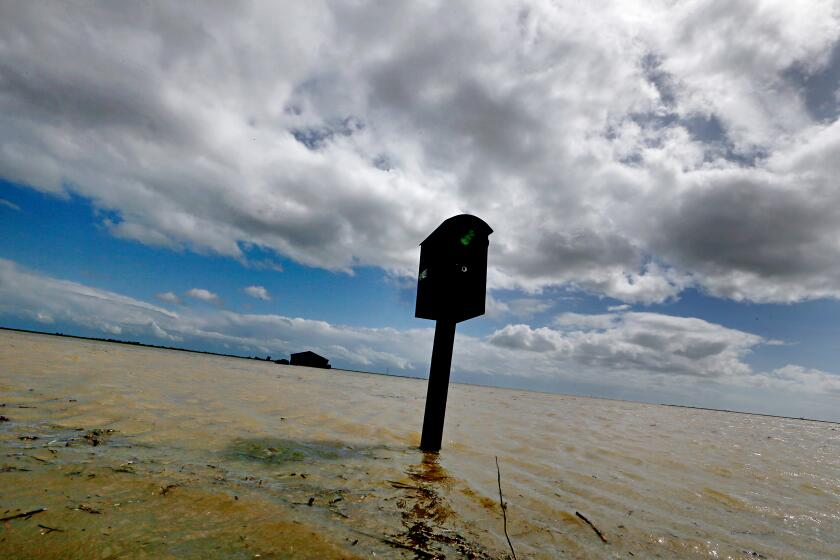Recent drought-busting storms mean misery for allergy sufferers in Southern California
- Share via
As Southern California shifts from one the wettest winters on record into spring, many people are showing symptoms brought on by the dark side of the recent storms — a profusion of blossoming trees, weeds and grasses dispersing pollen spores in the wind.
Inhaling these spores can result in classic hay fever symptoms: itchy and watery eyes, sneezing, and sore and stuffed-up noses that feel ready to explode.
So far, allergy experts say, Southern California’s pollen levels are moderate for this time of the year. But it is still early, and the worst is yet to come.
“It has been a crazy winter with a lot more rain than we usually see,” said Dr. Fonda Jiang, an allergist-immunologist at the Beach Allergy and Asthma Specialty Group in Long Beach. “So, we expect the pollen count this year to be robust, with more people experiencing symptoms as a result.”
This year’s hay fever season could last for “at least half the year,” she added, “and affect the quality of life of victims who have to miss work.”
Candida auris, a potentially deadly fungus that is resistant to drug therapy, is spreading rapidly across California and the U.S., the CDC said.
Hay fever, also known as allergic rhinitis, afflicts an estimated 50 million Americans annually, according to the American College of Asthma, Allergy and Immunology. Some estimates put the cost of treatment, doctor visits and lost at-work productivity at more than $5 billion.
Jiang and other experts say the best thing a sufferer can do is avoid the pollen that may be triggering symptoms.
That won’t be easy, however. “The pollen that most people care about is carried in the wind,” Jiang said. “So there’s no way to perfectly avoid it, even in an expanse of concrete without a plant in sight.”
Suggestions to help reduce inhalation of allergens include keeping windows shut and using air conditioning in your house and vehicle when the pollen count is high, and conducting outdoor routines such as jogging before dawn or in the evening to avoid certain pollen counts that increase after sunrise and peak at midday.
Several over-the-counter and prescription antihistamines can help lessen the aggravation of a runny nose, watery eyes and sneezing.
If standard medications don’t work, experts advise seeing an allergy specialist as early in the spring season as possible: Untreated allergies often get worse.
The ‘phantom’ Tulare Lake returns
More to Read
Sign up for Essential California
The most important California stories and recommendations in your inbox every morning.
You may occasionally receive promotional content from the Los Angeles Times.
















